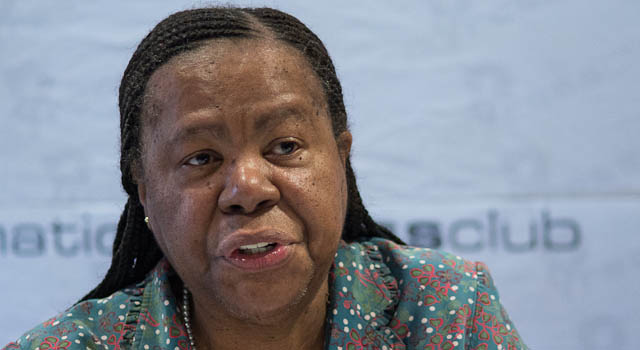
It will take up to eight years to issue all South Africans with smart card identity documents, home affairs minister Naledi Pandor said on Thursday.
The department believed that once the process was underway, it could print about 3m ID cards a year, using the government printing works, Pandor told reporters ahead of her department’s budget vote in parliament.
Last year, soon after she succeeded Nkosazana Dlamini-Zuma in the portfolio, Pandor predicted the transition would take four years.
Home affairs would start issuing the cards in stages from July this year, she said. “This will be a major step towards creating a modern, reliable population register.”
It was hoped the microchip technology in the new cards would cut down on identity fraud. “We are going to have to work really hard and smart, and really begin to ensure we get the necessary infrastructure into as many offices as possible, but I think we should not continue to issue that book which is easily duplicated and really causes lots of problems,” Pandor said.
She said her department believed it would have achieved registry security when birth registry was the “only point of entry” to the database.
To this end, she said, the department was making headway in achieving its long-standing goal of registering all babies within a month of birth.
Last year, it registered more than 602 000 births. It intended increasing this by at least 8% this year. Pandor said she intended abolishing issuing of birth certificates by 2015 “because it opens us to a lot of abuse, a lot of identity theft, a lot of trafficking of children”.
She hoped to finally invalidate all remaining duplicate IDs — some 20 000 compared to half a million four years ago — by the end of the year. “I now wish to announce that it is my intention to invalidate duplicate IDs by the end of the year at the stroke of a pen.”
Pandor said the government had “at last” agreed to set up a new border management agency to manage all points of entry and monitor the country’s frontiers. It would be led by home affairs and would include the police, defence force, revenue service and the departments of health and agriculture.
Pandor told MPs in her budget speech she had no interest in altering existing policies to craft her own legacy as home affairs minister after succeeding Dlamini-Zuma, who was widely credited for turning the department around.
She has taken the department’s existing policies as “my mandate,” she said. The minister said the department’s shortcomings remained backlogs in asylum management and the processing of permanent and temporary resident applications.
Deputy home affairs minister Fatima Chohan said the department was introducing tracking technology to monitor the progress of asylum applications, which included sending applicants updates on their cellphones.
Chohan said there was dramatic decrease in the number of asylum seekers South Africa received since 2011. It appeared the trend was continuing and the country was losing its status as the first port of call for Africans fleeing war or poverty.
“All indications are that in this year, barring the outbreak of war or other catastrophic occurrence on the continent and our region, we are set to see further reductions in the number of asylum seekers.”
Following the announcement last week that the refugee status of Angolans living in South Africa would be rescinded on 31 August, Chohan reiterated the government was urging Angolans to return home as that country had now enjoyed more than a decade of stability.
She said the department was still conducting a count, but indications were that there were just under 20 000 Angolans in South Africa. A final figure would be announced within a few weeks.
Those who wanted to remain in the country would have to apply to home affairs for the necessary documents to legitimise their stay.
According to Pandor, in 2010 about 1,9m people, or 3,7 percent of those living in South Africa, were immigrants, with the majority hailing from Zimbabwe. — Sapa




